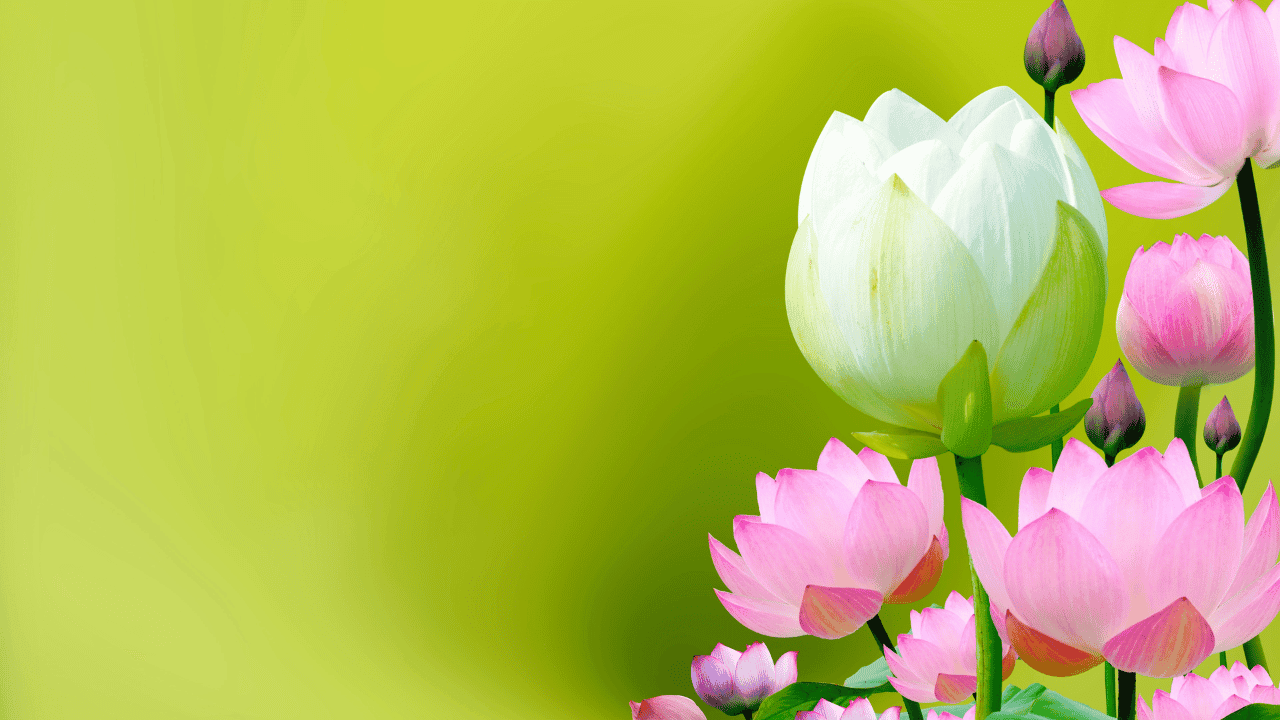The Real Meaning and Symbolism of the Lotus Flower

The Lotus Flower is more than just a plant; it’s a powerful symbol of beauty, purity, and spiritual growth. Known scientifically as Nelumbo nucifera, this remarkable species has been revered for thousands of years across Asia. Its ability to thrive in muddy waters while producing pristine blooms has made it a universal emblem of resilience and transformation.
This sacred plant holds deep cultural and religious significance. In Hinduism and Buddhism, it represents enlightenment and the journey of the soul. Its unique properties, such as regulating its own temperature and surviving for centuries, make it a botanical wonder. The lotus is not just a symbol; it’s a testament to life’s ability to rise above challenges.
Key Takeaways
- The Lotus Flower symbolizes purity, resilience, and spiritual growth.
- It thrives in muddy waters, emerging clean and beautiful.
- It holds significant cultural and religious importance in Asia.
- The plant can regulate its temperature and survive for centuries.
- It is a national symbol in countries like India.
Introduction to the Lotus Flower’s Significance
From muddy waters to spiritual enlightenment, the lotus has inspired generations. This remarkable plant, known scientifically as Nelumbo nucifera, has been a symbol of purity and resilience for thousands of years. Its ability to thrive in challenging environments while producing stunning blooms has made it a universal emblem of transformation.
Historical Overview and Myths
The lotus has deep roots in ancient myths and folklore. In Hinduism, it is associated with divine beauty and spiritual awakening. The plant’s journey from the murky depths of a pond to the sunlit surface mirrors the soul’s path to enlightenment. Similarly, in Buddhism, the lotus symbolizes purity and the potential for rebirth.
Fossils of this plant date back over 100 million years, showcasing its enduring presence on Earth. Its ability to germinate after centuries highlights its resilience. Cultures across Asia have embraced the lotus in art, literature, and rituals, celebrating its natural beauty and symbolic depth.
The Journey from Ancient Traditions to Modern Appreciation
Over time, the lotus has transcended its ancient origins to become a cherished symbol in modern culture. Its representation in religious practices and artistic expressions continues to inspire. The plant’s unique ability to regulate its temperature and survive in nutrient-rich soil reflects its adaptability.
Today, the lotus is admired not only for its aesthetic appeal but also for its profound meaning. Its colors, from pink to white, carry distinct messages of purity, passion, and wisdom. As a national symbol in countries like India and Vietnam, the lotus remains a testament to cultural heritage and spiritual growth. For more on its symbolism, explore this detailed guide.
From ancient myths to modern gardens, the lotus continues to captivate hearts and minds. Its journey from muddy waters to radiant blooms serves as a reminder of life’s potential for beauty and transformation. Learn more about its cultural significance here.
Cultural and Religious Symbolism Lotus Flower
Across cultures and centuries, the lotus has stood as a beacon of spiritual and cultural significance. Its ability to rise from murky waters and bloom into pristine beauty has made it a universal symbol of purity and resilience. In Eastern traditions, this remarkable plant is deeply intertwined with spiritual growth and enlightenment.
Eastern Traditions and Spiritual Growth
In Hinduism, the lotus is associated with divine beauty and spiritual awakening. It is often linked to deities like Vishnu and Lakshmi, symbolizing divine perfection. The plant’s journey from muddy depths to the water’s surface mirrors the soul’s path to enlightenment. Similarly, in Buddhism, the lotus represents purity of body, speech, and mind, emerging unstained from its surroundings.
In Buddhist iconography, the lotus is a recurring motif, symbolizing wisdom and liberation. Its daily cycle of submerging at night and blooming in the morning is seen as a metaphor for rebirth and the unfolding of the soul. This symbolism extends to Jainism, where the lotus is associated with the tirthankaras, or spiritual teachers.
Lotus in Art, Literature, and Rituals
The lotus has also found its way into art and literature, serving as a powerful metaphor for spiritual awakening. In ancient texts, it is often depicted as a miraculous phenomenon, emerging from fire or water to signify purity. Its presence in temple offerings and decorative motifs highlights its enduring cultural importance.
From India to Vietnam, the lotus is celebrated in rituals and ceremonies. Its pink and white blooms are used as offerings in temples, symbolizing devotion and inner vitality. In modern times, the lotus continues to inspire artists and writers, its natural beauty serving as a reminder of life’s potential for transformation.
The Botanical Wonders of the Lotus Flower
Nature’s marvels often hide in plain sight, and the lotus is no exception. This remarkable plant, scientifically known as Nelumbo nucifera, is a masterpiece of adaptation and beauty. Its ability to thrive in muddy waters while producing pristine blooms has fascinated scientists and spiritual seekers alike.
Anatomy and Adaptation
The lotus boasts a unique structure that sets it apart. Its leaves, which can span up to two feet in diameter, rise high above the water’s surface. These expansive leaves are supported by long petioles, allowing them to capture sunlight efficiently. The plant’s deep-rooted system anchors it firmly in the soil, ensuring stability in its aquatic habitat.
One of the most fascinating features is the lotus effect. The leaves are self-cleaning, repelling water and dirt to maintain their pristine appearance. This adaptation not only enhances the plant’s beauty but also ensures its survival in nutrient-rich environments.
Unique Features and Scientific Insights
The lotus is not just visually stunning; it’s scientifically intriguing. Research has shown that the plant can regulate its temperature, maintaining a stable internal environment even in fluctuating conditions. This thermoregulation ability is rare in the plant kingdom and highlights its resilience.
Its large, showy blooms are another wonder. Each flower can reach up to ten inches in diameter, with petals arranged in a striking spiral pattern. These blooms last only a few days, but their impact is lasting, symbolizing purity and renewal.
“The lotus is a living example of nature’s ability to thrive in adversity, embodying both beauty and strength.”
Growth and Ecological Role
From seed to blossom, the lotus’s journey is a testament to its longevity. Seeds recovered from ancient peat bogs have germinated after centuries, showcasing the plant’s incredible resilience. In its native habitats, the lotus plays a vital ecological role, providing shelter and food for various aquatic species.
Its ability to grow in diverse environments, from ponds to rivers, makes it a versatile and enduring presence. Whether in a garden or a wild setting, the lotus continues to inspire with its natural beauty and symbolic depth.
Cultivation and Propagation of the lotus flower
Cultivating the lotus requires patience, precision, and a deep understanding of its natural habitat. This sacred plant thrives in specific conditions, making its growth both an art and a science. From water depth to sunlight exposure, every detail matters to ensure its success.
Growing Conditions and Environmental Needs
The lotus flourishes in warm, shallow waters with a depth of 12 to 24 inches. It needs at least six hours of direct sunlight daily to bloom. Nutrient-rich soil, combined with aquatic fertilizer, supports its growth and vibrant hue.
Water temperature plays a crucial role, with an optimal range of 75 to 87 degrees Fahrenheit. In regions like the southern U.S., planting begins in April, while northern areas start in May. This seasonal timing ensures the plant has enough warmth to thrive.
Farming Techniques and Harvest Practices
Propagation methods include using rhizomes or seeds. Rhizomes are preferred for faster blooms, while seeds symbolize the plant’s resilience, capable of germinating after centuries. Planting in ponds or flooded fields mimics its natural environment.
Farmers often rotate crops with rice, maintaining soil quality and water purity. Harvesting is typically manual, ensuring delicate petals and leaves remain intact. This care reflects the lotus’s symbolic association with life and renewal.
For those seeking deeper connections, the lotus’s journey mirrors the transformative nature of spiritual soulmate bonds, highlighting growth and renewal in relationships.
The Culinary and Medicinal Uses of the Lotus Flower
For centuries, the lotus has been a staple in both kitchens and medicine cabinets across Asia. This remarkable plant, scientifically known as Nelumbo nucifera, offers more than symbolic beauty. Its seeds, roots, and leaves are valued for their nutritional and healing properties.
Edible Parts: Seeds, Roots, and Leaves
The lotus is a versatile ingredient in traditional cuisines. Its seeds are often dried or roasted and used in desserts like mooncakes. The root, known as lotus root, is a crunchy vegetable popular in stir-fries and soups. Leaves are used to wrap food or brewed into herbal teas.
Each part of the plant is rich in nutrients. Seeds provide protein and fiber, while the root is a good source of vitamins and minerals. Leaves contain antioxidants that support overall health. This makes the lotus a valuable addition to any diet.
Traditional Recipes and Remedies in Asian Cuisines
In Asian cultures, the lotus is a key ingredient in many dishes. Lotus root is often sliced and fried for a crispy snack or added to hot pots. Lotus seed paste is a common filling for pastries and desserts. These recipes are not only delicious but also deeply rooted in tradition.
Medicinally, the plant has been used for centuries. Lotus tea, made from dried leaves, is believed to aid digestion and promote relaxation. Extracts from the root and seeds are used in remedies for conditions like high blood pressure and fever. Research supports these uses, showing the plant’s ability to reduce blood sugar and improve insulin sensitivity.
“The lotus is a bridge between food and medicine, offering both nourishment and healing.”
During festivals, the lotus plays a special role. Its seeds and roots are often included in celebratory meals, symbolizing prosperity and renewal. This integration of the lotus into food highlights its cultural significance and enduring relevance.
Lotus Flower in Art, Innovation, and Scientific Discovery
The lotus’s unique biology has sparked breakthroughs in design and technology. Its ability to thrive in muddy waters while maintaining pristine leaves has inspired innovations across industries. From self-cleaning surfaces to architectural marvels, this remarkable plant continues to shape modern creativity.
The Lotus Effect: Nature Inspiring Modern Design
One of the most fascinating aspects of the lotus is its self-cleaning property, known as the lotus effect. The plant’s leaves repel water and dirt, keeping them clean even in muddy environments. This natural phenomenon has inspired scientists to develop water-repellent materials and coatings.
In material science, the lotus effect has led to innovations like stain-resistant fabrics and self-cleaning glass. These advancements mimic the plant’s hydrophobic leaf structure, offering practical solutions for everyday challenges. The lotus’s biology has become a cornerstone of biomimicry, where nature inspires human ingenuity.
Architectural and Decorative Inspirations
The lotus’s elegant form has also influenced architecture and art. Its petals and leaves have inspired the design of buildings, sculptures, and decorative motifs. For example, the Lotus Temple in Delhi mirrors the plant’s blooming structure, symbolizing unity and peace.
In urban spaces, lotus-inspired designs are used to create serene environments. Gardens and public art installations often feature the plant’s shape, reflecting its cultural and spiritual significance. The interplay between art, science, and nature is beautifully embodied by the lotus.
From ancient temples to modern labs, the lotus continues to inspire. Its natural beauty and innovative potential remind us of the endless possibilities when we look to nature for guidance.
Conclusion
Lotus Flower, rooted in history, this natural wonder continues to inspire across generations. Its ability to rise from mud and bloom on the water’s surface symbolizes purity and renewal. From ancient rituals to modern innovations, its impact remains profound.
This plant’s botanical wonders, like the self-cleaning leaves and resilient root system, have inspired scientific breakthroughs. Its influence extends to art and architecture, where its elegant form mirrors beauty and grace.
In cuisine, its seeds and roots are cherished for their nutritional value, while its cultural significance spans continents. Whether in dreams about rivers or real-life gardens, it serves as a reminder of life’s transformative power. Its enduring legacy continues to captivate hearts and minds, bridging the past and present.

















